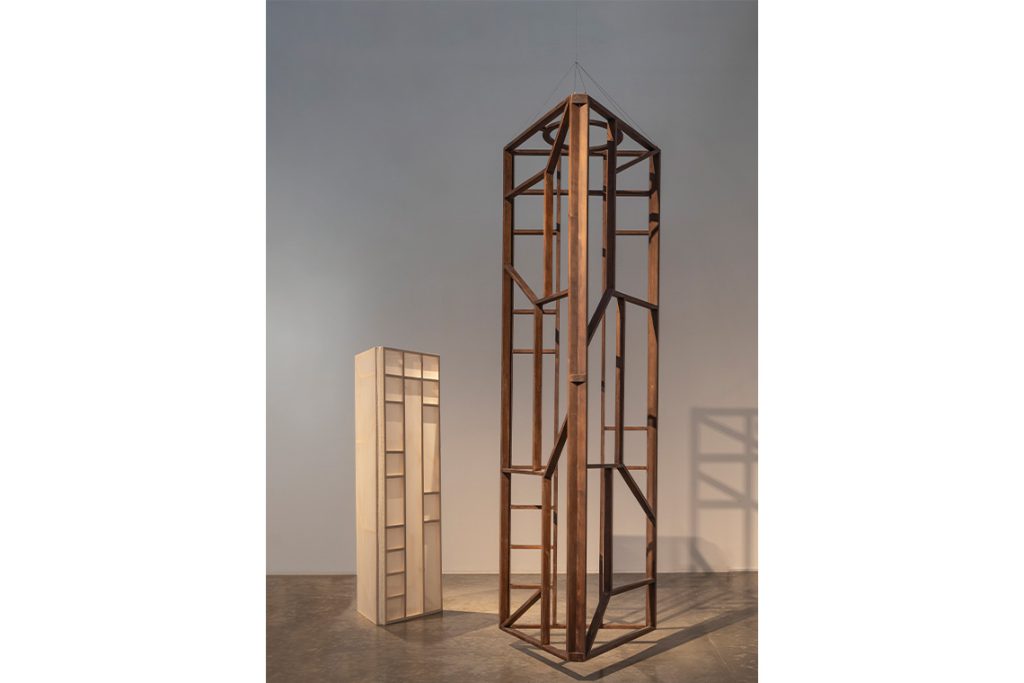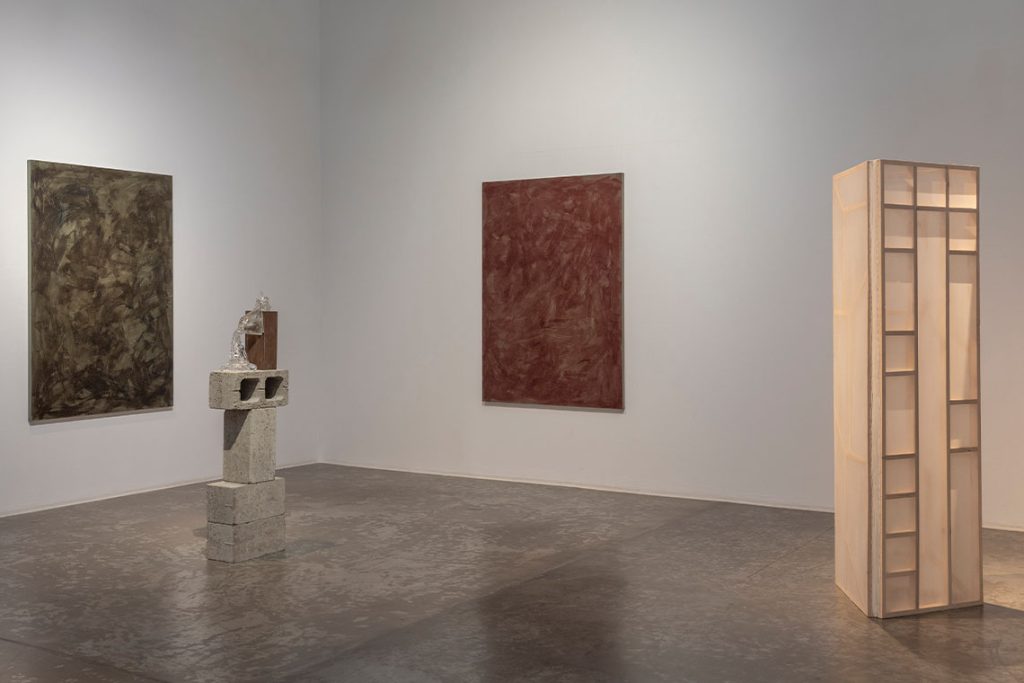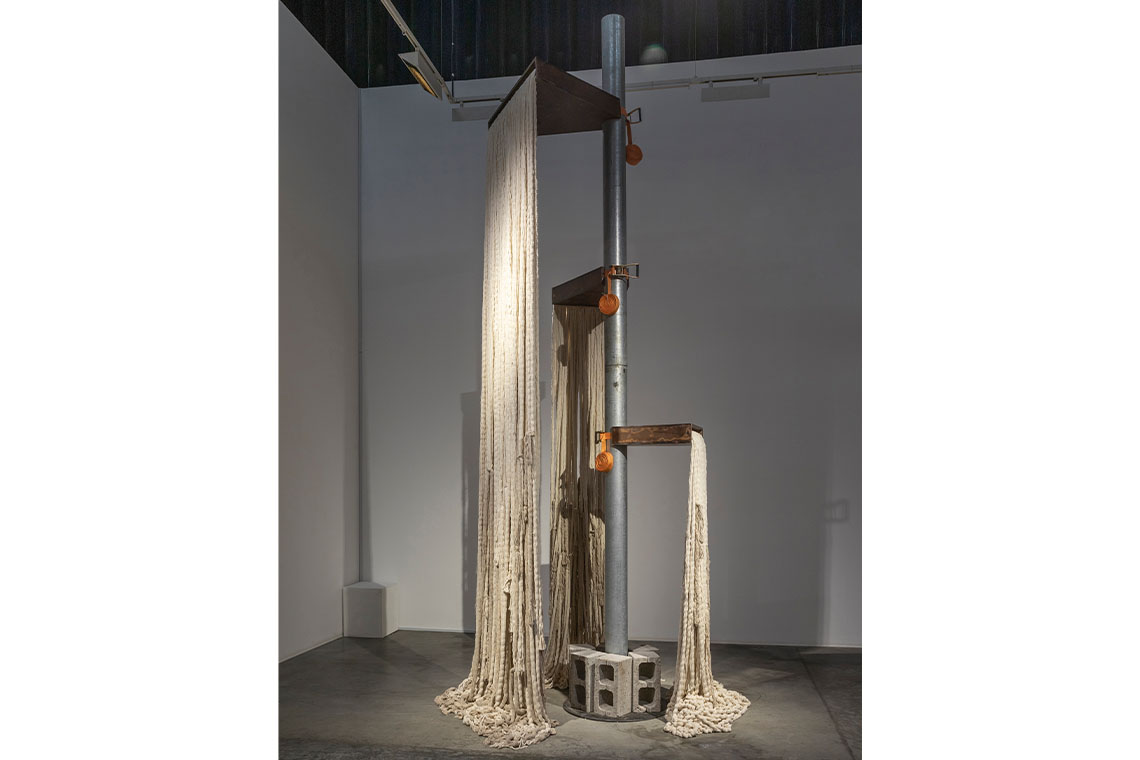Offering a visualisation of the act of ‘staying grounded’, Afra Al Dhaheri’s Give Your Weight to the Ground at Dubai’s Green Art Gallery compels the viewer to follow the title’s instruction.
Stepping into Afra Al Dhaheri’s Give Your Weight to the Ground is like entering a cocoon, or unexpectedly finding a free moment during a busy day. The exhibition transforms Green Art Gallery into a meditative space that tugs at you to linger and bids you to submit to the title’s gentle imperative. ‘Staying grounded’ has become a platitude in a capitalist culture that is designed precisely to make it impossible, but Al Dhaheri’s show briefly yet decidedly restores meaning to the words.
The works in the exhibition emerged from a deeply personal place for the artist. Ironically, they were made during a period of intense productivity a year and a half ago, she tells Canvas. An assistant professor at Zayed University by day, Al Dhaheri would spend nights in her studio feverishly working in preparation for the current show. “I wanted the exhibition to reflect on what it means to be an artist practicing in the UAE’s growing art scene,” she says. “In this fast-paced environment, the artist community is constantly over-producing and overwhelmed.”

When she came up for air, Al Dhaheri found that she had produced an overabundance of works, and overcrowding the exhibition space at first seemed like the perfect way to explore the concept of artistic overkill. Eventually, however, Give Your Weight to the Ground took shape as the opposite – a space of relief from that experience. The show opens with a piece consisting of a wooden spiral staircase, its stairs apparently weighted down by Al Dhaheri’s characteristic cascading thick cotton ropes. A structure associated with ascension – evoking the notions of ‘rising to the top’ or ‘breaking the glass ceiling’, as it were – is rendered dysfunctional by the ropes, their frayed ends pooling on the floor. “There are only three steps and they don’t take you anywhere, but instead they pour out this weight of rope,” says the artist. “The installation is pleading with the audience to stop and give their weight to the ground.”
Across the room is More afloat than grounded no. 2 (2023), a slender and lightweight wooden frame suspended from the ceiling by barely visible wire. The artist’s intended reading of the piece is suggested by the title, but it can be interpreted as the inverted mirror image of the first work: appearing to hover over the ground, but in fact subject to the inevitable force of gravity. Between them stands Don’t pull my hair (set of two) (2023), which reemphasises the point with two identical, opposite-facing wooden structures sloping upwards but anchored to the floor by taut strands of rope secured with one concrete block apiece.

Materiality is central to Al Dhaheri’s practice, and here the choice of materials is especially pertinent. Organic materials such as wood and cotton underline the metaphor of grounding, while the concrete blocks evoke the notion of a foundation. The labour involved in realising the works leaves an almost physical impression, perceptible even in the artist’s absence; she unwound the ends of the cotton ropes in Give your weight to the ground (spiral staircase) (2023) by hand and wove bobby pins into four metres of rope for Round and round we go (2023). One imagines that this process itself was an exercise in grounding. The sound piece that accompanies the tangible works speaks to this materiality rather than departing from it: heavy drums, rising and falling crescendos and ambient noises produce vibrations that can be felt when sitting on the small benches in the corners of the room.
One work seems out of place from the rest. Give your weight to the ground (Glass) (2023) consists of a small glass sculpture perched atop a plinth made of concrete blocks. The piece was made while Al Dhaheri was working on her MFA at the Rhode Island School of Design in 2017. “I was playing with Richard Serra’s Verb List, and I was looking at the word ‘overflow’,” she says, referring to the American artist’s 1967 language-based drawing that lists 84 verbs intended to guide his sculptural practice. “To make the work, I poured the glass in its amorphous form inside a mould made of graphite bricks. The weight of the glass pushed one brick out, and then it overflowed.” The sculpture’s appearance of fragility, amid the load-bearing ropes and industrial cinderblocks, belies the strength of glass – lending a new meaning to the exhibition’s title: ground yourself, it seems to say, and you will not break.



